Did you know that loaches are a type of catfish?
Yes, these slimy and snake-like fish are very closely related to catfish, which makes their aquarium care and maintenance pretty similar. If catfish aren’t your preferred fish, then there are tons of tropical loach species that you could add to your aquarium.
Keep reading to find out everything you need to know about loaches, how to take care of them, and the best species to add to your home aquarium!
Introduction to Loaches
Loaches are members of the Amphiliidae family. This family is within the larger taxonomic group of Siluriformes, which is the order of catfish.
In simple terms, this means that loaches are a type of catfish.
There are about 70 recognized species of loach in the Amphiliidae family with most species originally found in fast-moving waters in Africa.
Loaches are largely categorized by their slender bodies, three pairs of barbels, and large pectoral and ventral fins. They have small eyes that sit at the top of their head.
Most species of loach stay under 5 inches (12.7 cm) when fully grown, though some can grow to be much bigger than that.
Unlike catfish that are cultivated for their meat, loaches do not provide much economic value. However, they’re some of the most beloved bottom-feeding fish in the aquarium hobby!
Loach Care Requirements
There are a few peaceful species of loach available for the aquarium, and usually, they’re pretty distinguishable from other catfish.
The exact care requirements for your freshwater aquarium fish will depend on its species. Some loaches stay small and solitary while others can grow to be several inches and need a group setting.
Many species of loach are omnivores. The meat-based portion of their diet is largely composed of larvae, worms, snails, and other squirmy animals living in and around the substrate.
In the aquarium, these bottom-dwelling fish will use their multiple sets of delicate barbels to seek out these same foods. Because of this, loaches are generally not safe with invertebrates, especially snails.
That being said, some loaches will leave your clean-up crew alone, but it’s better to assume that they’ll become a meal.
Secondly, loaches are sensitive to copper which can make dosing medications more difficult. Though loaches aren’t necessarily hard to take care of, they can be difficult to medicate if disease enters the aquarium.
Many species of loach do not have scales covering their body. This allows for better transmission between the water and the internal environment but also invites disease.
Instead, you will need to use natural alternatives or medications catered toward sensitive fish.
Do Loaches Eat Algae?
As mentioned before, loaches are omnivores. But will they clean your tank of algae?
No, just because these freshwater fish look like they’d eat algae doesn’t mean that they will. Many loaches refuse to eat algae entirely!
This can lead to some problems with beginner hobbyists who were expecting their loach to take care of their algae problem. As a result, the fish may be kept in improper conditions or have to be returned to the fish store.
Better alternatives for algae-eating fish are Otocinclus sp., Siamese algae eaters (Crossocheilus oblongus), and the Bristlenose Pleco (Ancistrus sp.).
The Best Freshwater Loaches for Your Aquarium
Loaches are perfect additions to many community tanks and there are several different species to choose from, but it’s important to match their care requirements to what you can provide!
Here are some of the most popular loaches available and what they need to thrive…
Kuhli Loach
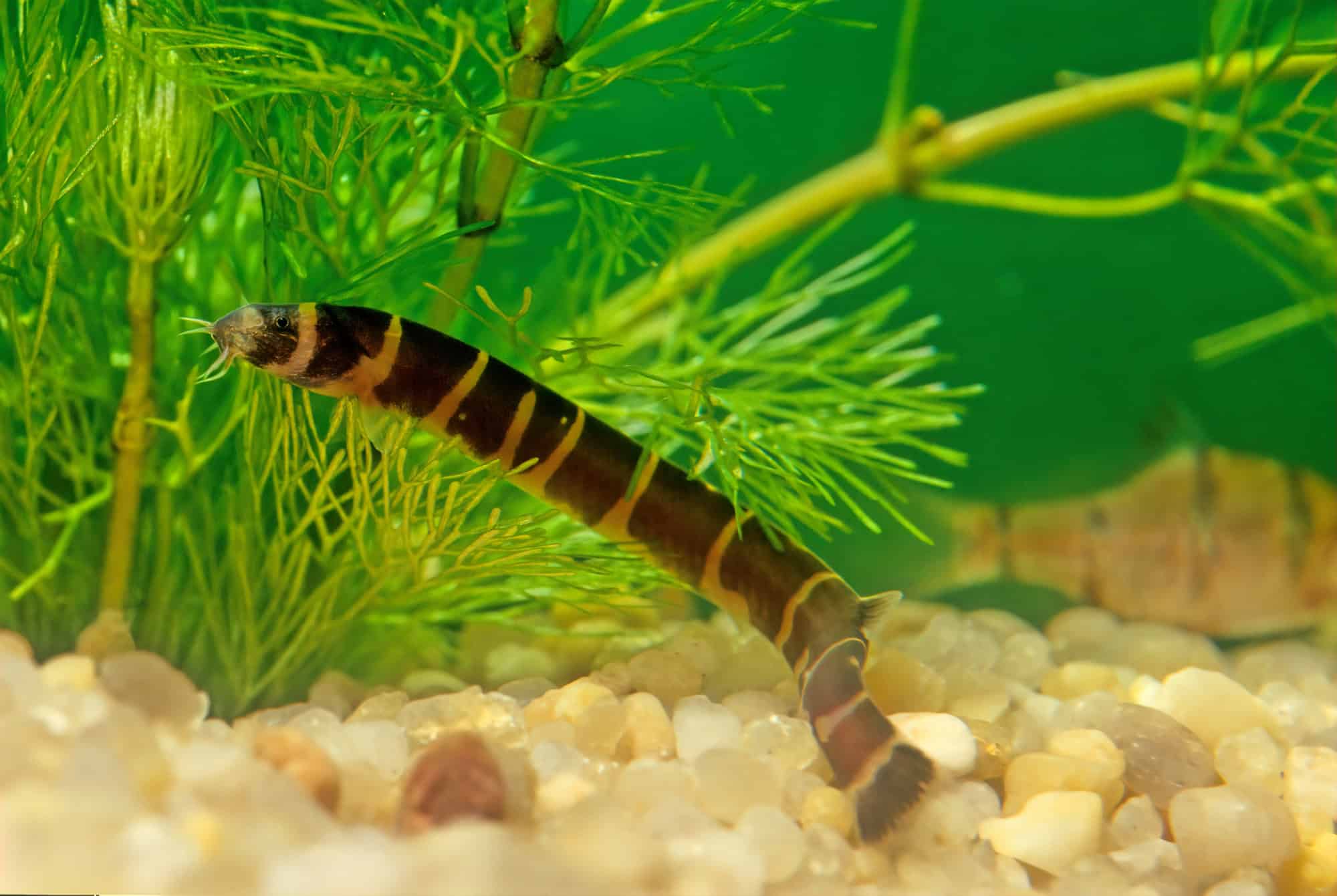
- Scientific name: Pangio kuhlii
- Maximum size: 6 inches (15.2 cm)
- Tank size: 20 gallons (75.7 L)
- Invert-safe: No
The Kuhli Loach originates from Southeast Asia and is one of the most popular species available in the aquarium community.
These bottom-dwelling fish are long and round with alternating black and yellow stripes; the black portions are much larger than the thin yellow stripes, giving this fish an especially dark appearance.
The Kuhli Loach does best with other peaceful fish that stay towards the upper portion of the tank.
For a full care sheet, make sure to check out our Kuhli Loach guide here.
Yoyo Loach
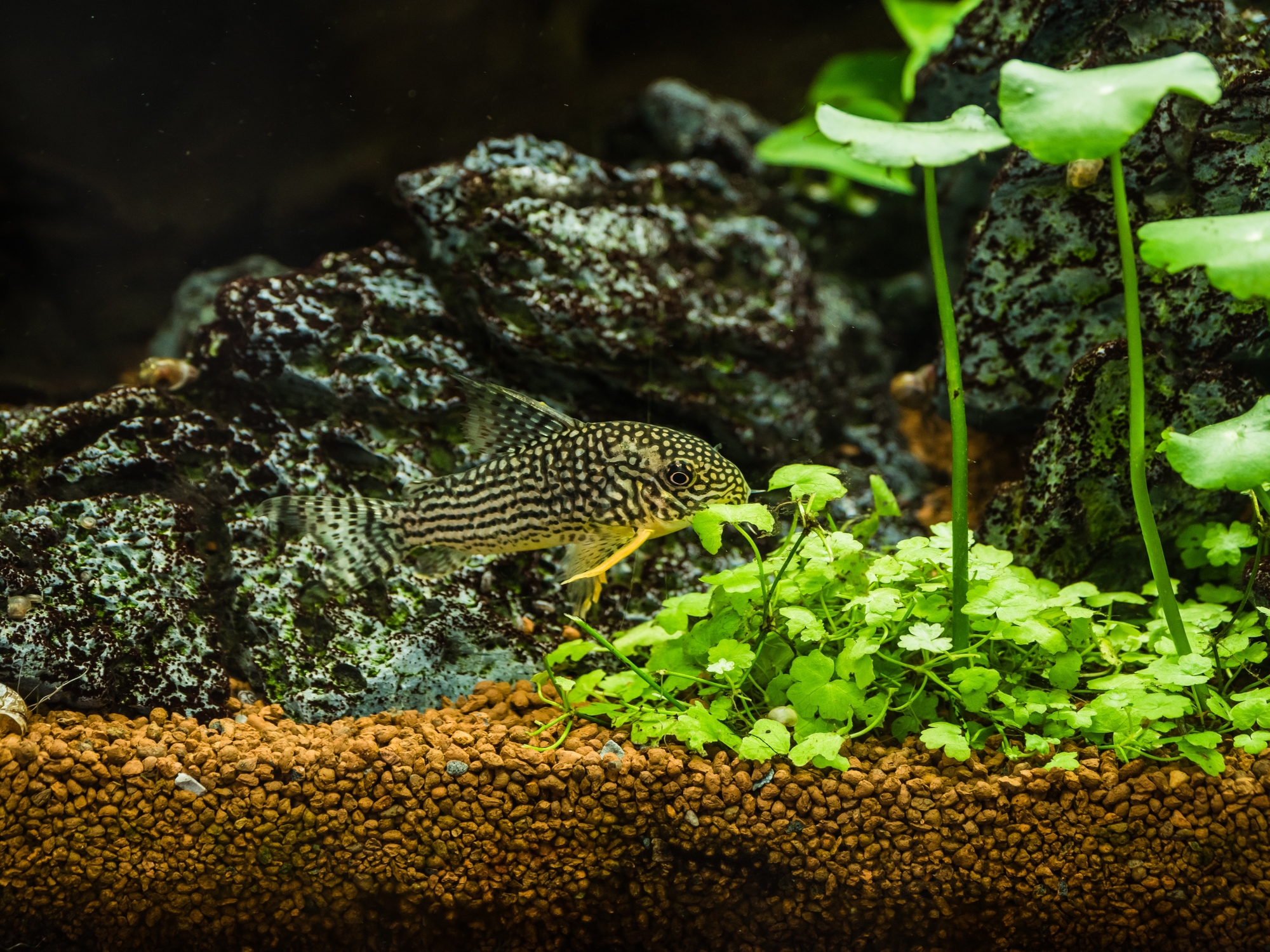
- Scientific name: Botia lohachata
- Maximum size: 4 inches (10.2 cm)
- Tank size: 20 gallons (75.7 L)
- Invert-safe: No
The Yoyo Loach goes by a few names including Lohachata Botia Loach, Pakistani Loach, Reticulated Loach, and Y-Loach.
These fish get their most common name of Yoyo Loach from the black and silver markings on their body which seems to spell out ‘YOYO’. Apart from that, the Yoyo Loach is one of the few loaches to have small scales covering its body.
The Yoyo Loach is semi-aggressive and will do best with larger, more active tank mates.
For more information about this active fish, make sure to check out our full Yoyo Loach guide here.
Zebra Loach
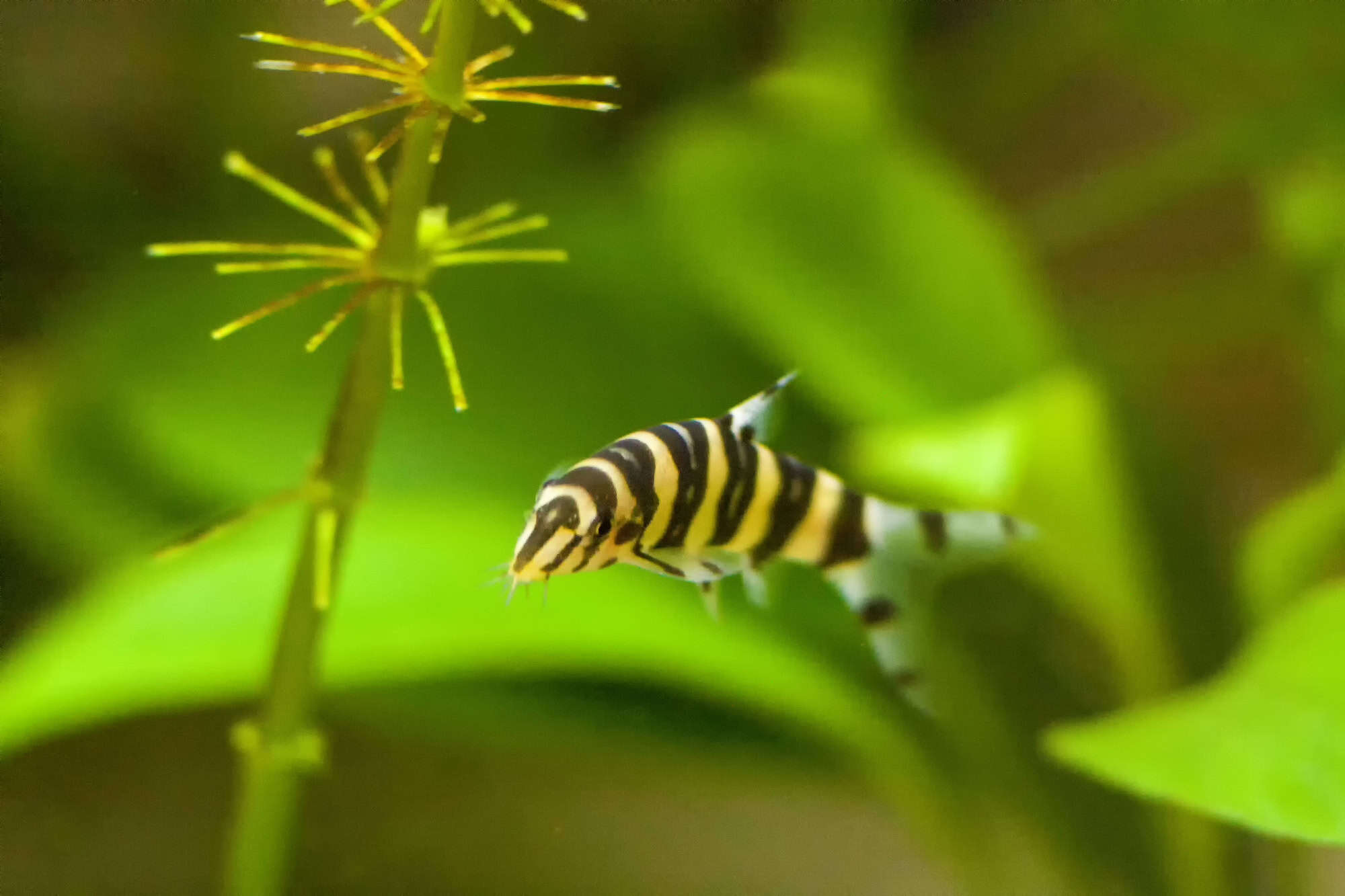
- Scientific name: Botia striata
- Maximum size: 4 inches (10.2 cm)
- Tank size: 30 gallons (113.6 L)
- Invert-safe: No
The Zebra Loach is sometimes confused with the very closely related Yoyo Loach. The easiest way to tell these two beautiful fish apart is by looking at their stripes!
The Zebra Loach is accurately named after its alternating black and yellow stripes. These fish have a larger minimum tank size due to their need to be kept in schools.
The Zebra Loach is an endangered species according to the IUCN Red List of Threatened Species due to habitat loss and pollution.
Dojo Loach
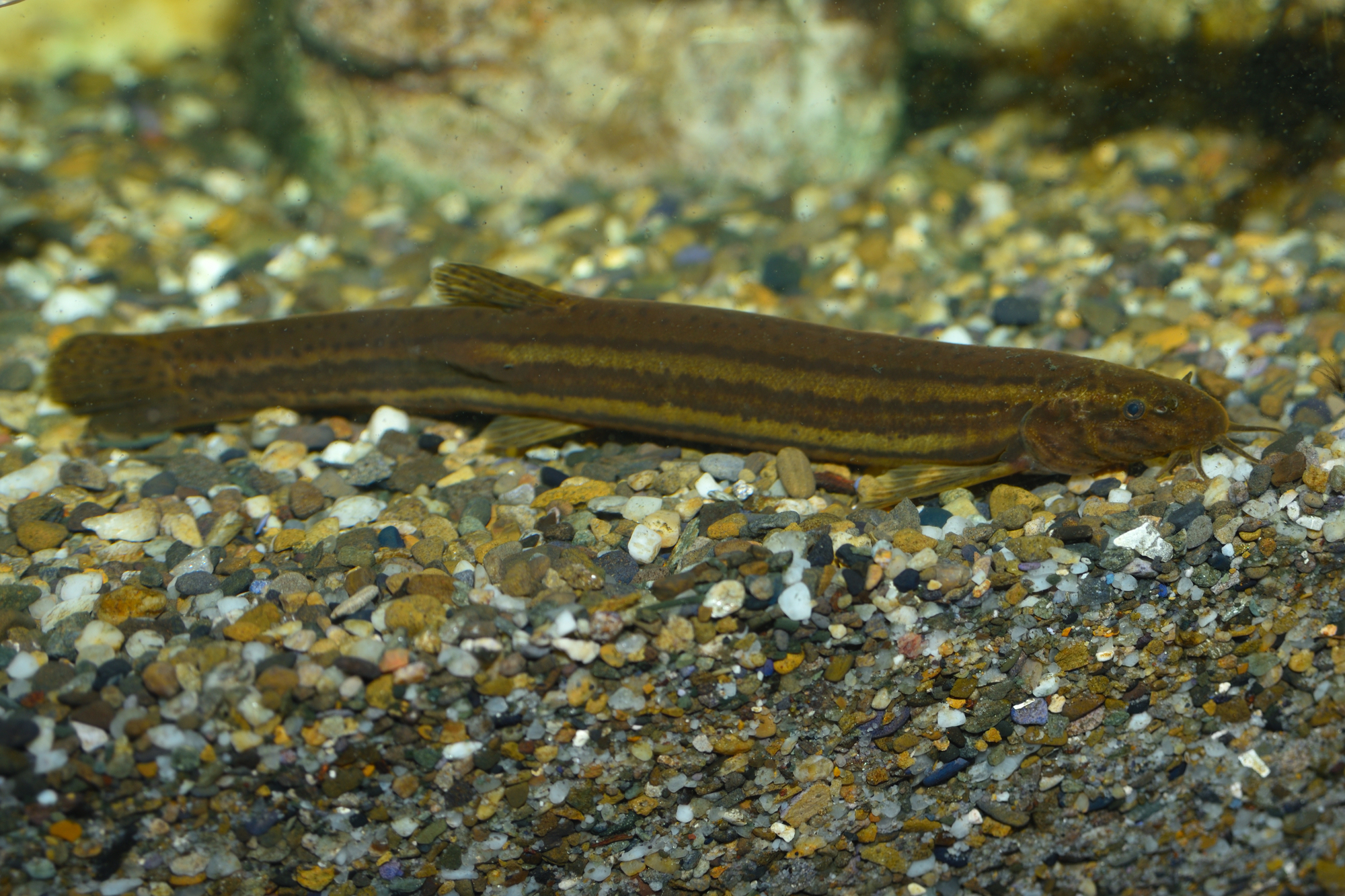
- Scientific name: Misgurnus anguillicaudatus
- Maximum size: 12 inches (30.5 cm)
- Tank size: 40 gallons (151.4 L)
- Invert-safe: No
The Dojo Loach, also known as the Pond Loach and Oriental Weather Loach, is one of the largest loaches you can have in your aquarium. The minimum aquarium size needed is only 40 gallons, but it will do better in larger tanks.
These bottom-dwellers rarely leave the lower level of the tank and will even bury themselves into the substrate. They are also able to breathe atmospheric air if water conditions deteriorate.
If you find your Dojo Loach constantly traveling to the surface of the water for air, then it’s a good idea to check water parameters and other tank conditions. Something might be making it difficult for your fish to breathe.
Otherwise, the Dojo Loach can live a solitary life but will tend to be more active when kept with other loaches.
Clown Loach
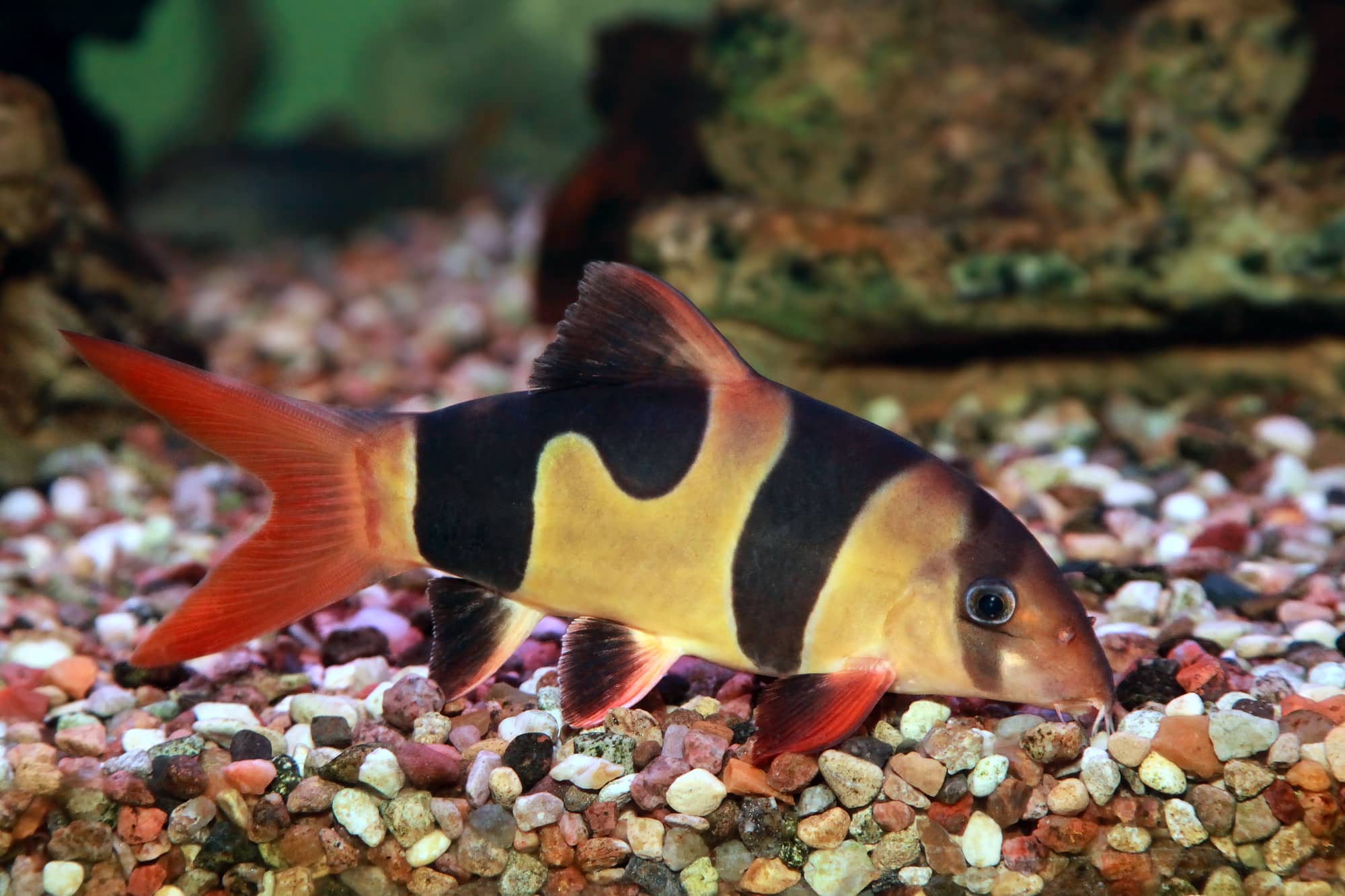
- Scientific name: Chromobotia macracantha
- Maximum size: 12 inches (30.5 cm)
- Tank size: 140 gallons (636.5 L)
- Invert-safe: No
Arguably the favorite loach species in the whole aquarium hobby, the Clown Loach is often sadly kept in incorrect conditions.
While the Clown Loach is very common to come across at your local pet store, the problem is that they’re sold when they’re only a few inches long.
Hobbyists of all skill levels are often unaware of how large these fish can grow to be. The truth is that these are monster fish! And not only are they big, but they are also incredibly active and need to be kept in schools.
Conclusion
Loaches can be a great addition to the aquarium if you’re looking to bring some life and excitement to the bottom portions of your display.
Several species can be kept in simple setups, but it’s important to keep in mind the potential size and their need to be kept in schools.
If you have any questions about loaches, other species of catfish, or have had experience keeping an exotic species of loach, don’t hesitate to leave a comment below!


